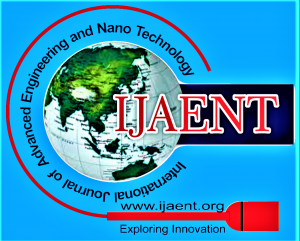![]()
Nanomaterials: Applications in Electronics
Harshada V. Mhetre1, Yuvraj. K. Kanse2, Suhas. S. Patil3
1Mrs. Harshada V. Mhetre*, Research Scholar Student, Department of Electronics Engineering, Bharati Vidyapeeth University, Pune (Maharashtra), India.
2Dr. Yuvraj K. Kanse, Department of Electronics Engineering, Shivaji University, Kolhapur (Maharashtra), India.
3Dr. Suhas S. Patil, Department of Electronics Engineering, Shivaji University, Kolhapur (Maharashtra), India.
Manuscript received on August 24, 2021. | Revised Manuscript received on September 24, 2021. | Manuscript published on September 30, 2021. | PP: 7-19 | Volume-4, Issue-6, September 2021. | Retrieval Number: 100.1/ijaent.D0464084621 | DOI: 10.35940/ijaent.D0464.094621
Open Access | Ethics and Policies | Cite | Mendeley
© The Authors. Published By: Blue Eyes Intelligence Engineering and Sciences Publication (BEIESP). This is an open access article under the CC BY-NC-ND license (http://creativecommons.org/licenses/by-nc-nd/4.0/)
Abstract: Nanotechnology is steadily transgressing from the laboratory to the commercial sphere and is enhancing products in a variety of sectors. Nanotechnology R&D has evolved from foundational discoveries aimed at understanding and exploiting nanoscale behaviour to an enabling technology. Nanomaterials are materials which are sized between 1 to 100 nm. Due to the basic characteristics of nanomaterials such as optical properties, reflection, transmission, absorption, and light emission, which are different from those of bulk materials, nanomaterials are useful in a variety of applications in different fields. In this paper the different types of nanomaterials have been outlined based upon their dimensions and applications in the field of electronics such as Quantum dots (QD’s) in solar cells and Carbon Nanotubes and graphene in FETs.
Keywords: Quantum Dots, Carbon Nanotubes, Graphene, Solar cells, FETs
